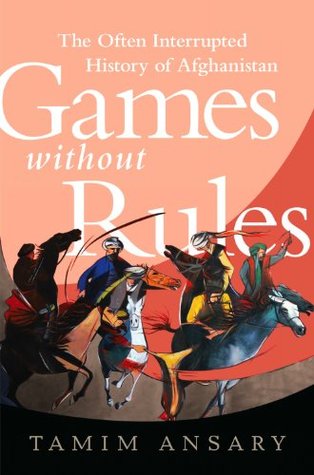More on this book
Kindle Notes & Highlights
Read between
October 19 - October 26, 2021
How would I compare the US involvement in Afghanistan to the Soviet one? I gave the answer I had given often in America: I saw disturbing parallels. The United States seemed to be sinking into the same morass as the Soviets. The United States had made commitments it could not easily keep for practical reasons and could not easily back out of for political reasons. The United States was squandering lives and money in Afghanistan without being able to explain exactly why. The United States was able to control the cities but could not seem to quell a rural insurgency carried out by people who
...more
The Greeks conquered it, which is why Hellenic kingdoms flourished here for two centuries and green-eyed blonds still sometimes pop up in pockets of the country. Even Buddhists conquered this territory, which is why the unique art style known as Greco-Buddhist originated and flourished only here.
Afghanistan is not really impossible to conquer. It’s just that all the successful conquerors are now called “Afghans.”
“It’s me against my brothers, it’s me and my brothers against our cousins, it’s we and our cousins against the invader”—so goes an old Pushtoon saying.
the area that was called Ariana in ancient times and Khurasan in medieval times came to be known as Afghanistan.
Rural Afghanistan was in many ways the real Afghanistan, and the social fabric of this universe of villages is a key to this story because it still exists and its tenacity continues to affect the politics of the country.
Dost Mohammed set out to weld a coherent nation that could be ruled from his chosen capital, the city of Kabul. This would become the fundamental project of Afghan history, a project thwarted and distorted by both outside and inside forces. It is with Dost Mohammed, then, that the Afghan story really begins.
In 1873, Russia forced the khan of Khiva to accept “Russian protection,” an imperialist euphemism for “nice little country you got here, what a shame if something was to happen to it.” Three years later Russia annexed the adjacent khanate of Khokand. Its power now extended to the very banks of the Amu River. Only Afghanistan stood between the Russian juggernaut and the pugnacious British in India. It was a bad place for a little country to be situated.
When you’re there, you can’t tell where it is unless someone tells you. Villages on both sides of this so-called Durand Line are inhabited by members of the same tribes. People on one side of the line have cousins on the other side, and vice versa. How did Durand decide where to draw this line? By calculating how far forward into Afghan territory the British could push without getting pushed back. The Durand Line marks the line of scrimmage at a particular moment. As such, it is sure to be a place of enduring conflict. It froze into place Afghan resentment about losing Peshawar, turning that
...more
But the aftershocks of the Soviet collapse rippled to the eastern frontiers of the former empire with equally momentous implications, although these went more unnoticed at first. The former Soviet Socialist Republics of central Asia—Kazakhstan, Kyrgyzstan, Turkmenistan, Uzbekistan, and Tajikistan—had been joined only uneasily to European Russia. Once Moscow’s power evaporated, trace memories of an earlier culture, long submerged by European Communism, began to re-emerge.
When the Soviet Union collapsed, bureaucratic inertia transformed the top Communist officials into newfangled dictators. They didn’t rule as Communists anymore, just as strongmen offering their people posters and statues of themselves and national holidays commemorating their own birthdays in place of something, anything, to believe in. No wonder Islam began to rise again here. It was the one indigenous spiritual idea that promised to provide some cohesive social meaning.
Pakistan saw seductive possibilities in the reconfiguration of central Asia. Throughout its brief history, Pakistan had been a fragile country wedged between a hostile Afghanistan and a hostile India. Central Asia looked like an escape hatch because there as elsewhere Islamism came flowing in as Communism ebbed out, and Islam, as it happened, was the fundamental political and ideological premise of Pakistan, the one theme that provided social cohesion to Pakistan’s disparate parts. Also, no matter what Turkey and
There was a historical connection between central Asia and south Asia, and Islam might be the cultural solvent that could meld them into one again.
The problem is not that Afghans unite and then cannot be conquered; the problem is that Afghans fragment and then cannot be governed.
in Afghanistan, the twenty-first century lies directly atop the twelfth, but the contradictory currents of the country’s culture and history may at last be melding into some new blend.


